Sometimes the wind sweeps the dark rain clouds to the side of the blue-green mountains and a grey curtain of rain drops to the dark forest below.
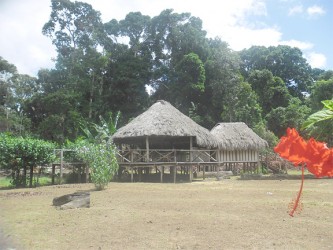
At times like these, you can almost see Karu’ku and Nan’pi of old as they entered the forest, the first settlers, leaving forever their mark on the sprawling savannahs of the Rupununi. Karu’ku became Kanuku, bequeathing his name to the majestic range of mountains that divides the Rupununi savannahs in two. Nan’pi became Nappi, his name now the name of the Macushi Amerindian community sitting in the hills just outside the shadow of the Kanuku mountains. They were two men, fleeing tribal wars in Brazil, who reached Guyana to imprint their names on the landscape.
It is different now of course.
But here in Nappi, Central Rupununi, Region Nine, Rufina Da Silva, 65, can still recall the stories of her grandfather and the days long ago when her family moved to live in the forest for months at a time. She said that they used to go deep into the jungle to “bleed balata” from May until October, only coming out when the balata dried. Entire families moved into the forests and eventually, she said, she began to make craft. Now, she comes to the city during exhibitions like GuyExpo to sell her craft.
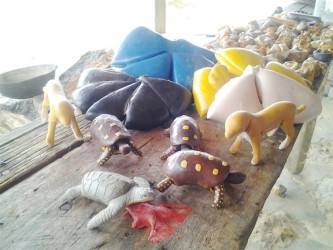
The Nappi of her youth, she said, was small and the people were scattered. Da Silva said that she was 10 years old when the first school, a Catholic school, opened in Nappi with the headmaster being Patrick Abraham, who was married to Mary Abraham. She said that only a few people lived in the community at the time and even fewer spoke English. Nappi, 32.5 kilometres away from Lethem, now has two satellite communities: Parishara and Haiowa.
She recalled hearing from her grandfather, the stories of how the community was named. “Kanuku is from the name of a man. His name is Karu’ku. In English, they turn it to Kanuku,” she said, adding that Karu’ku fled up the mountains from his enemies in Brazil. After Karu’ku, Nan’pi came and he lived at the waterfalls now called Nappi Head, she said. Da Silva related that as more people came, Nan’pi came out sometimes close to the edge of the forest for food before heading back.
More and more people came and many settled at Crashwater before the priests came and they moved to Nappi, she said, adding that Crashwater is now only a farming area. She said that her grandfather was among those who moved out of Crashwater to Nappi.
Times are different now, she said. “We used to tie up hammocks in the forest… the Amerindians never use to think about sugar, flour, rice, oil…we didn’t look for no sweet thing…we used to cook porridge, corn, yam, sweet cassava…then most of the people who live in the forest came out into the savannah to live.”
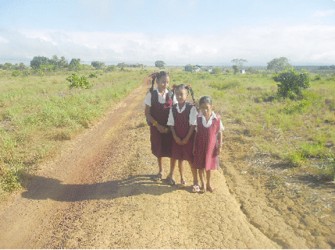
Some of the changes she likes, but not others. “I don’t like the way the culture fading away,” Da Silva said. “You hear this one,” she said gesturing to one of her grandchildren shouting in English. “They don’t understand Macushi at all… maybe the parents don’t talk Macushi to try to keep their culture.”
The population of Nappi is currently about 1200 persons, most of the Macushi tribe. Like most interior communities, there are not enough jobs to go around, but just as in the past, the environment with its beautiful landscapes and varied biodiversity seems to have an answer, if only in a more modern way.
Up and down hills, past trees heavily laden with mangoes and dunks, past cassava farms in the savannah, into the cool rainforest, on the banks of the Maipaima Creek, named after a pleasantly scented medicinal plant used by the shaman, is the Maipaima Eco-Lodge, now undergoing a $1.5 million facelift. The thatch and wood cabins, now safely outside the range of towering Mora trees, are being rebuilt as the village looks to get more into the eco-tourism business.
“This is something new to the community,” explained Guy Fredericks, the Toshao of Nappi, adding that the lodge was officially commissioned in 2006 and it was a learning experience for the community as they sought to improve the experience.
There is no shortage of attractions for the adventurous. Hundreds of bats dangling from the roof of a cave? No problem. Hiking to the sparkling, tumbling Jordan Falls, and spending a night under giant trees in the crisp mountain air? That’s on offer too as is bird-watching with sightings of the Harpy eagle a real possibility. “This is a birders paradise,” said Fredericks pointing out that rare birds such as the Horned Screamer have been spotted here.
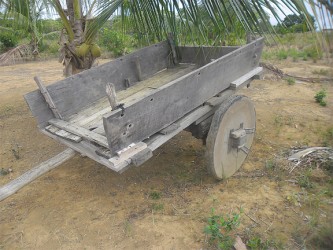
Long before the Moco-Moco hydroelectricity station, Jordan Falls also called Wamacaru Falls was considered a potential site for hydropower, and there is still some of the old equipment there, Fredericks said.
The lodge can comfortably accommodate 10 persons on beds and there is space for hammocks as well. There is no permanent staff as the cost is high and most of the food items utilized are locally produced, though some things cannot be substituted. “If we get rum, it going with orange juice, it going with plum juice… sheer local stuff here, organic stuff,” Fredericks said. Guests trickle in, mostly learning of Maipaima via word of mouth and mainly from the United Kingdom and the US. After its facelift, due to be completed later this month, the community hopes that more guests will come.
“It took a long time to catch up and it will take two or three years before it comes into full operation,” observed the Toshao who is also a guide for tourists. “It takes a lot of commitment. Sometimes I almost give up, but I like the work,” he said. It has helped the community, he said. “It helps by creating a little bit of employment for some of the people,” said Fredericks adding that others also benefit indirectly including through the purchase of food.
Nappi is also keen on conservation with sustainable utilization of the forest a key point for the community. “A lot of people could get a lot of money by commercial lumbering,” said Fredericks. “But the village doesn’t want that, the village is totally against commercial lumbering.” The leader said that they want to put in place no-hunting and no farming zones.
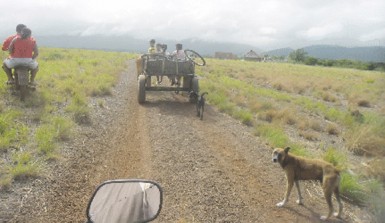
The Kanuku Mountains are now part of a protected area and the village is keen to tap into the Protected Areas Trust Fund. A key part of this is the preparation of a 10-year plan which they have done and which covers infrastructure and education, among other areas. “We are hoping that there will be a research centre right here at Maipaima,” said Fredericks. “There is stuff that is yet to be discovered.”
He said that many of the attractions are part of the protected area and the village wants an extension of their land. “We don’t intend to destroy the forest but we want to do this same thing, tourism,” he said.
Nappi is also well known for its balata craft and Fredericks said that only about three to four families still produce items. “There is a great demand for this craft. It is very unique. Nappi is the only community that produces quality balata craft,” he said. Fredericks said he started making balata figurines after returning from Brazil in 1998 and finding no employment. His father was a balata craftsman and encouraged him. In his first attempt, he took a week to complete a figurine but can now complete one in an hour. Most of his creations are of wild
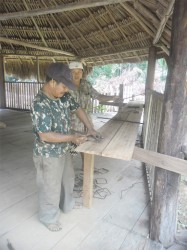
animals and it is enough to sustain his family, he said. Among his most memorable orders was one for a life-sized tapir now in South Africa, and close to 1000 phalluses for a HIV awareness and demonstration project.
Apart from the teaching jobs at the nursery and primary schools as well as the position of community health care worker, there are few formal jobs. Most of the villagers are farmers and a few continue to hunt. Many of the youths go to Lethem, Brazil or the gold fields in search of jobs, Fredericks said.
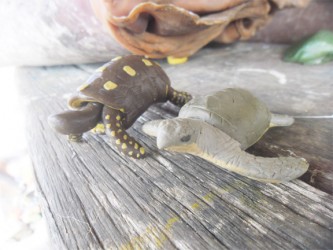

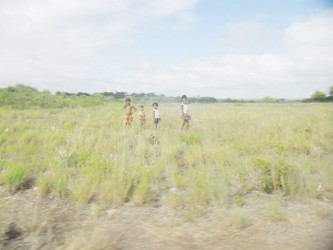
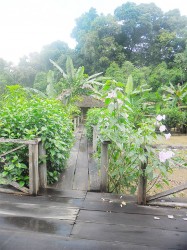
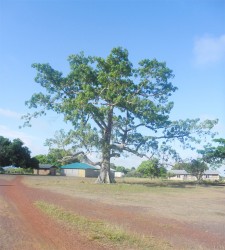
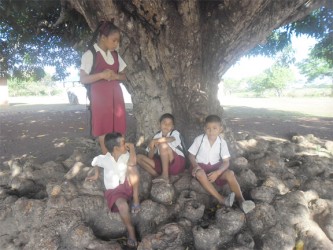
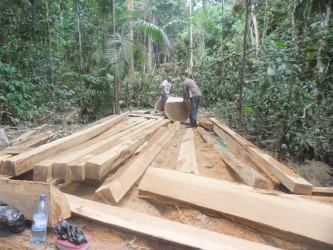
Most of the community uses solar panels for light and some have generators. In terms of communication, the cell phone tower at Lethem enables villagers to make phone calls, though the service can be spotty at times. The village is in need of an internet system, said Fredericks, noting that some students passed information technology at the CSEC exams but are unable to use their skills in the community.
As for the future hopes for the community, Fredericks said that he wants to see Nappi on the tourism map and more jobs for the community as well as better homes and roads and improved education and health standards.
In Nappi, some still use bullock carts with wooden wheels, and the warishi, as well as believing in the kanaima. In addition, there is a man who – despite the Christian religion in the community − would, for unfaithful wives or
husbands, “blow” and they would return. Residents speak Macushi, English and Portuguese, though as it relates to Macushi, the younger generation has not taken such a keen interest. “They use to beat us if we speak Macushi, but now they are trying to ask the children to speak Macushi,” Fredericks said.
“To me Nappi is one of the most beautiful villages in the Rupununi,” said a teacher at the Nappi Primary School. “Here it is open, hilly, breezy…and the Kanuku Mountains are nearby but not so close.”









